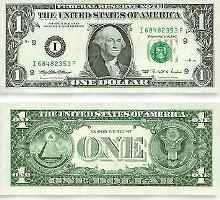 At least $4 million in counterfeit U.S. currency has flooded into Iraq since December, and U.S. and Iraqi officials are trying to determine how much of the counterfeiting is criminal and how much might be an Iranian attempt to influence Iraqi politics.
At least $4 million in counterfeit U.S. currency has flooded into Iraq since December, and U.S. and Iraqi officials are trying to determine how much of the counterfeiting is criminal and how much might be an Iranian attempt to influence Iraqi politics.
While some bills were crudely made and easily detected, U.S. military officials said, much of the money seized has been sophisticated fake hundred-dollar notes that require special printing presses, ink and paper.
In the Middle East, such capabilities typically belong to Iran and its proxies, notably branches of the Lebanese Shiite Muslim militant group Hezbollah, the officers said, citing recent briefings from the U.S. Secret Service.
“It runs the gamut of the local stuff on the … printer — not the right paper, but kind of looks like it — all the way up to the very well-made versions that we see, the ones coming in from Lebanon,” said Army Col. Peter Newell, commander of the 4th Brigade of the 1st Armored Division, which operates in Maysan and two other southern provinces near the border with Iran.
In recent weeks, the officers said, Iraqi and U.S. forces have started an anti-counterfeiting push that involves educating merchants and bankers and gathering intelligence on whether the money is linked to Iran’s attempt to influence Iraq’s March 7 parliamentary elections and to launder money for militia activity in Iraq’s southern Shiite heartland.
Before the push, vendors bought and sold the fake money openly on Iraqi streets at 5 cents on the dollar for the homemade kind and 20 cents on the dollar for the harder-to-detect notes. The bills were so pervasive that they turned up on U.S. military bases via Iraqi subcontractors.
Southern Iraq, with provinces that border Iran, is the main entry point for Iranian goods: legitimate items such as produce and building supplies and contraband such as weapons, drugs and counterfeit cash. Iraqi and U.S. agents have seized about $500,000 of the fake hundred-dollar bills in the recent push, nearly all of it in Maysan and other provinces near the border.
A U.S. intelligence report said that even more money — at least $4 million — came into Maysan in December. U.S. military officers who have read the report declined to say how that figure was determined.
The sudden influx of counterfeit notes three months before the March 7 parliamentary elections suggests that Iran was trying to influence the outcome, the officers said.
An election “is certainly one of the purposes of a mass quantity of cash all of a sudden,” Newell said. “It can pay for lethal aid; it can pay for elections; it can pay for commodities. It can be laundered into a lot of things, and what better time to launder significant amounts of money than during an election period, when lots of money is being moved?” SeattleTimes
Leave a Reply
You must be logged in to post a comment.